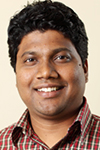Superconductor created from solvent
From WSU News:


A study led by Washington State University researchers has turned a fairly common nonmetallic solvent into a superconductor capable of transmitting electrical current with none of the resistance seen in conventional conductors.
“It is an important discovery that will attract a lot of attention from many scientific communities – physics, chemistry and materials science,” said Choong-Shik Yoo, a professor in chemistry and in the Institute for Shock Physics. The National Science Foundation-funded discovery, which grows out of research by Yoo doctoral student Ranga Dias, appears in the Proceedings of the National Academy of Sciences.
Read more at WSU News about the power and transport implications
Related Stories:
Bright Surf – Surprise Superconductor
Press News.org – WSU researchers create superconductor from solvent
Ad Hoc News – A study led by Washington State University Researchers …
Outlook Series – Choong-Shik Yoo, Washington State: Carbon Disulfide, CS2 – Surprise Superconductor
Energy Daily – Surprise Superconductor
ECN Magazine – WSU researchers create superconductor from solvent
Before It’s News – Superconductive Liquid Research Is Successful
Science Daily – Superconductor Created from Solvent
Phys.Org – Superconductor from solvent created: Study opens up new understanding of phenomenon
Science Newsline – Surprise Superconductor
Science Recorder – Researchers create surprise superconductor from solvent

